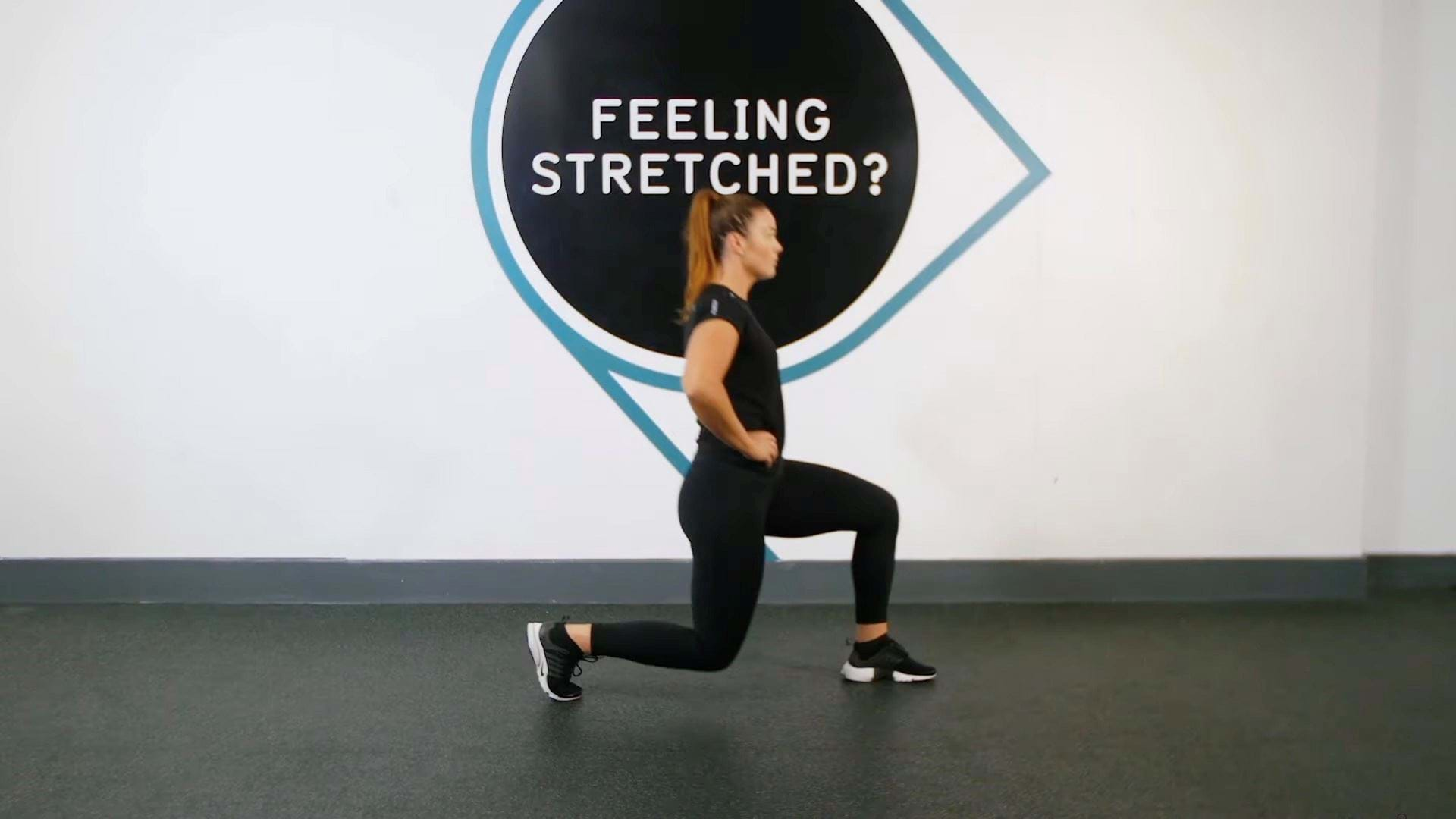Forward Lunges
What Is A Forward Lunge?

The forward lunge, often referred to as a lunge, is a lower body exercise that involves stepping forward and lowering down until both knees are at a 90-degree angle.
Forward lunges strengthen the quads, glutes, calves, and hamstrings, builds strength and stability in the legs and core, and improves balance and coordination. As each leg is worked unilaterally, forward lunges can help to improve strength imbalances between the two sides. This can improve overall strength and reduce the risk of injuries.
While lunges can be done with no equipment, it can also be performed with dumbbells, kettlebells, barbells, or sandbags. Adding weight increases the challenge and weighted forward lunges can be used as both a replacement to or in addition to squats.
Check out our other lunge variations: reverse lunges, jumping lunges, clock lunges, lateral lunges, curtsy lunges.
Commonly Asked Questions On Forward Lunges
Forward lunges work almost every muscle in the lower body, predominantly the quads, hamstrings, glutes, and calves. It also works the core and helps to improve balance, stability, and coordination.
Forward and reverse lunges both work the lower body and core, however different muscle groups are engaged more depending on which variation you do. Forward lunges place more work on the quads, while reverse lunges place more emphasis on the hamstrings and glutes.
Both lunges are useful exercises for strengthening the lower body and improving balance and stability. The variation you choose should depend on your goals and training programme. For example, if you want to target your posterior chain more, reverse lunges would be a better fit. You might also want to include both variations across the week.
The number of forward lunges you should do will depend on your workout goal. To increase endurance, aim for 12-15+. To build muscle, aim for 8-12, and for strength, aim for around 3-6. Choose a weight that allows you to reach your desired reps with only one or two reps left before failure.
Forward Lunge Tips
A common mistake people make with lunges is stepping forward so that both feet are in a line. Having your feet staggered but parallel creates a more stable base and allows you to perform forward lunges with better balance.
Another mistake is leaning the torso too far forward. Aim for a slight hinge at the hip, with your torso almost completely upright.
How To Do Forward Lunges
Stand with your back against a wall and place your feet in front of you, hip-width apart.
Lower your hips down until your thighs are parallel with the floor and knees stacked above your ankles. Keep your core engaged and your back, glutes, and head flat against the wall.
Extend your right leg out so it's parallel with the floor, and then hold this position for the desired time.
Bring your foot back to the floor and repeat on the other side.
If you’re not sure if any of the above exercises are suitable for you, please consult your doctor before you start it. Need guidance on how to perform the exercise? Ask a personal trainer at your gym.